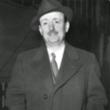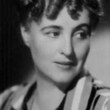The Siamese Twin Mystery
Description
More Details
Also in this Series
Published Reviews
Booklist Review
A forest fire forms the sinister backdrop to this exquisite puzzle starring and written by Ellery Queen, a pseudonym for cousins Frederic Dannay and Manfred Bennington Lee, who together wrote a prolific series featuring the sleuth. This one, originally published in 1933 (the seventh in the Queen series), shines as an example of a perplexing detective story that must be solved using old-fashioned, quirky, and meticulous deduction; it's also one of the best reissues so far in Otto Penzler's American Mystery Classics series. The fire traps Ellery and his father, Inspector Richard Queen, in a somber house with some decidedly odd inhabitants. The forbidding butler is bad enough, but, soon after their arrival, the Queens encounter what appears to be a giant crab scuttling through the halls, a horror almost overlooked when the house's owner is found murdered. A soon-dismissed confession, conjoined twins who have been kept a secret, mysteriously torn playing cards, and kleptomania are just some of the elements flying toward readers as they follow the Queens' labyrinthine efforts toward a satisfying answer. Readers will want more Ellery Queen after this, and should try The Dutch Shoe Mystery, another in the American Mystery Classics series.--Henrietta Verma Copyright 2020 Booklist
Publisher's Weekly Review
First published in 1933, this entry in the American Mystery Classics series shows Queen (the pen name of Fredric Dannay and Manfred B. Lee) at his best, expertly combining plot and setting to heighten suspense en route to the satisfying solution. Amateur sleuth Ellery Queen and his father, NYPD homicide inspector Richard Queen, run into a forest fire while driving in Upstate New York. They take refuge in the mountain top home of surgeon John Xavier, where Richard has a bizarre night-time encounter with a creature resembling a giant crab--and a member of the household is shot to death and found clutching half of a playing card, apparently a clue to the killer's identity. With local law enforcement preoccupied with fighting the blaze, Richard is deputized to investigate, but another life is claimed before Ellery can put the puzzle pieces together. The claustrophobic impact of the fire moving closer and closer to the Xavier home, with no prospect of rescue, is palpable. This rivals Christianna Brand's Green for Danger as a classic of brilliant deduction under extreme circumstances. (Feb.)
Kirkus Book Review
Chased up isolated Arrow Mountain by a forest fire that's made the roads downhill impassable, Ellery Queen and his father, New York's Inspector Richard Queen, find that what awaits them at Arrow Lodge, atop the mountain, is even more murderous.Arrow Lodge, where the Queens arrive without invitation in the middle of the night, is something of a haunted house, complete with a scuttling figure Inspector Queen describes as a giant crab and a retainer who could plausibly have been played by Boris Karloff on the tale's first publication in 1933. Dr. John Xavier, a celebrated surgeon who's retired at 45, is clearly engaged in some kind of hush-hush research. But although he's a cordial host to his unexpected guests, he says nothing that first night about the work he and Dr. Percival Holmes are doing, and by morning he's lost his chance, shot to death with half a playing card, the six of spades, clutched in his hand. That card and a knave of diamonds found ripped in half in the dead hand of Dr. Xavier's brother, Mark, when he's murdered soon after, are virtually the only clues Ellery has, but he expatiates on their significance so early and often that some readers, though very few of the tiny cast of characters, may forget the much more pressing threat of the fire that's inexorably climbing closer and closer. The result is the most atmospheric of the early cases about and by Queen (The Dutch Shoe Mystery, 1931, etc.) and the one in which the detective's legendary analytical prowess ("what I am about to say constitutes probably the most fantastic reconstruction of a clue in the history of the so-called clever' crime") is both most impressive and most strained, improbable, and out of place.A pioneering, preposterously far-fetched, but still impressive example of the locked-in-a-cabin whodunit. Copyright Kirkus Reviews, used with permission.
Booklist Reviews
*Starred Review* A forest fire forms the sinister backdrop to this exquisite puzzle starring and written by Ellery Queen, a pseudonym for cousins Frederic Dannay and Manfred Bennington Lee, who together wrote a prolific series featuring the sleuth. This one, originally published in 1933 (the seventh in the Queen series), shines as an example of a perplexing detective story that must be solved using old-fashioned, quirky, and meticulous deduction; it's also one of the best reissues so far in Otto Penzler's American Mystery Classics series. The fire traps Ellery and his father, Inspector Richard Queen, in a somber house with some decidedly odd inhabitants. The forbidding butler is bad enough, but, soon after their arrival, the Queens encounter what appears to be a giant crab scuttling through the halls, a horror almost overlooked when the house's owner is found murdered. A soon-dismissed confession, conjoined twins who have been kept a secret, mysteriously torn playing cards, and kleptomania are just some of the elements flying toward readers as they follow the Queens' labyrinthine efforts toward a satisfying answer. Readers will want more Ellery Queen after this, and should try The Dutch Shoe Mystery, another in the American Mystery Classics series. Copyright 2020 Booklist Reviews.
Publishers Weekly Reviews
First published in 1933, this entry in the American Mystery Classics series shows Queen (the pen name of Fredric Dannay and Manfred B. Lee) at his best, expertly combining plot and setting to heighten suspense en route to the satisfying solution. Amateur sleuth Ellery Queen and his father, NYPD homicide inspector Richard Queen, run into a forest fire while driving in Upstate New York. They take refuge in the mountain top home of surgeon John Xavier, where Richard has a bizarre night-time encounter with a creature resembling a giant crab—and a member of the household is shot to death and found clutching half of a playing card, apparently a clue to the killer's identity. With local law enforcement preoccupied with fighting the blaze, Richard is deputized to investigate, but another life is claimed before Ellery can put the puzzle pieces together. The claustrophobic impact of the fire moving closer and closer to the Xavier home, with no prospect of rescue, is palpable. This rivals Christianna Brand's Green for Danger as a classic of brilliant deduction under extreme circumstances. (Feb.)
Copyright 2019 Publishers Weekly.




























































